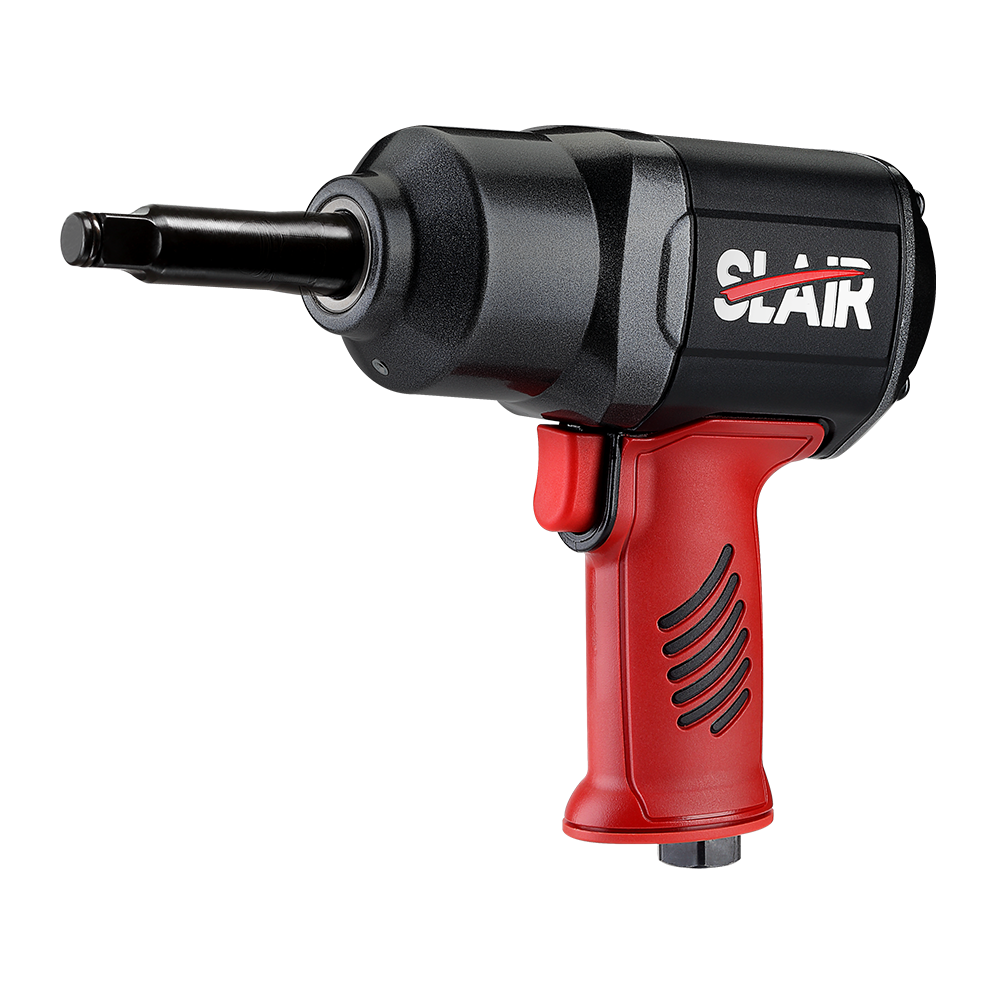The design of the hammer mechanism in an air impact wrench significantly influences its performance and durability. The hammer mechanism is responsible for converting the rotational motion of the motor into rapid impacts, generating the high torque required for fastening and loosening applications. Here's how the design of the hammer mechanism affects the wrench's performance and durability:
Hammer Size and Weight: The size and weight of the hammer directly impact the force of the impacts delivered to the anvil. Larger and heavier hammers can generate more powerful impacts, resulting in higher torque output. However, they may also increase the overall weight and size of the wrench, affecting maneuverability and user comfort.
Hammer Material and Construction: The material and construction of the hammer determine its durability and resistance to wear. High-quality materials such as heat-treated steel or alloy steel are commonly used to ensure the hammer can withstand repeated impacts without deformation or damage. Additionally, advanced manufacturing techniques, such as precision machining and forging, can enhance the hammer's strength and durability.
Hammer Action Mechanism:
Air impact wrenches employ different types of hammer action mechanisms, including twin hammer, pin clutch, and rocking dog designs. Each mechanism has its unique characteristics in terms of torque output, impact frequency, and energy efficiency. For example, twin hammer designs are known for their high torque output and durability, making them suitable for heavy-duty applications.
Impact Frequency and Torque Control: The design of the hammer mechanism influences the impact frequency and torque control capabilities of the air impact wrench. By adjusting the air pressure and regulating the flow of compressed air to the hammer mechanism, users can control the wrench's torque output and impact frequency to suit different fastening tasks and materials.
Sealing and Lubrication: Proper sealing and lubrication of the hammer mechanism are essential for maintaining smooth operation and preventing premature wear and damage. Sealed bearings and O-ring seals help protect the internal components of the hammer mechanism from contamination by dust, debris, and moisture, ensuring long-term reliability and performance.
Maintenance and Serviceability: The design of the hammer mechanism should facilitate easy maintenance and serviceability to prolong the wrench's lifespan and minimize downtime. Accessible components, replaceable wear parts, and user-friendly disassembly procedures simplify routine maintenance tasks such as cleaning, lubrication, and parts replacement.
In summary, the design of the hammer mechanism in an air impact wrench plays a critical role in determining its performance, torque output, and durability. By optimizing factors such as hammer size, material, action mechanism, and maintenance features, manufacturers can ensure that their wrenches deliver reliable and efficient operation in various industrial and automotive applications.





 English
English 中文简体
中文简体 русский
русский Deutsch
Deutsch Português
Português Español
Español
















